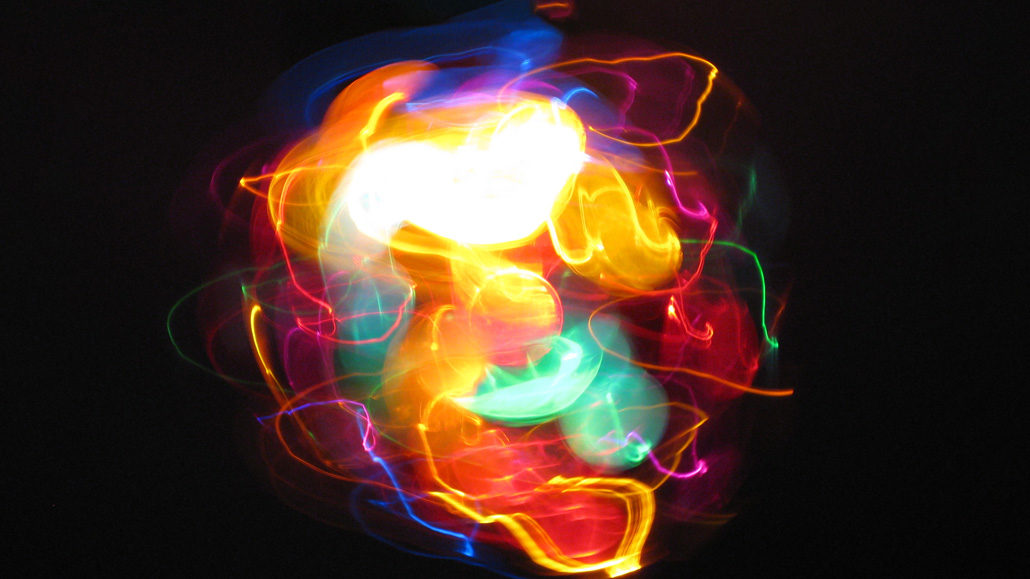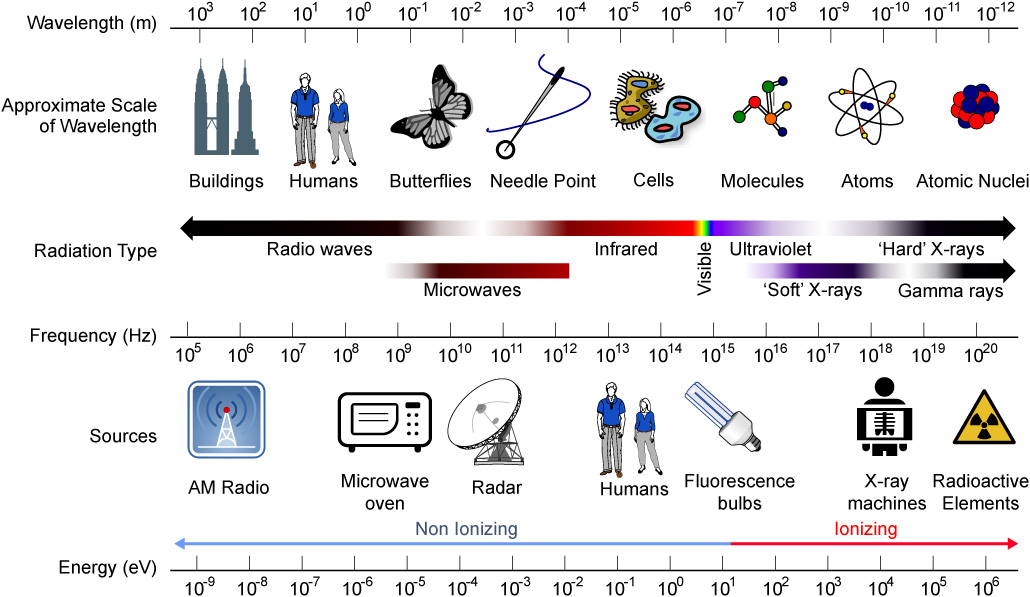Understanding light and other forms of energy on the move
This radiation includes visible light, radio signals — even medical X-rays

Light is a form of energy created by the movement of electrons. Different wavelengths appear as different colors, although most wavelengths are not visible to the human eye.
Natasha Hartano/Flickr (CC BY-NC 2.0); adapted by L. Steenblik Hwang
Light is a form of energy that travels as waves. Their length — or wavelength — determines many of light’s properties. For instance, wavelength accounts for light’s color and how it will interact with matter. The range of wavelengths, from super short to very, very long, is known as the light spectrum. Whatever its wavelength, light will radiate out infinitely unless or until it is stopped. As such, light is known as radiation.
Light’s formal name is electromagnetic radiation. All light shares three properties. It can travel through a vacuum. It always moves at a constant speed, known as the speed of light, which is 300,000,000 meters (186,000 miles) per second in a vacuum. And the wavelength defines the type or color of light.
Just to make things interesting, light also can behave as photons, or particles. When looked at this way, quantities of light can be counted, like beads on a string.
Humans have evolved to sense a small part of the light spectrum. We know these wavelengths as “visible” light. Our eyes contain cells known as rods and cones. Pigments in those cells can interact with certain wavelengths (or photons) of light. When this happens, they create signals that travel to the brain. The brain interprets the signals from different wavelengths (or photons) as different colors.
The longest visible wavelengths are around 700 nanometers and appear red. The range of visible light ends around 400 nanometers. Those wavelengths appear violet. The whole rainbow of colors falls in between.

Most of the light spectrum, however, falls outside that range. Bees, dogs and even a few people can see ultraviolet (UV) light. These are wavelengths a bit shorter than violet ones. Even those of us without UV vision can still respond to UV light, however. Our skin will redden or even burn when it encounters too much.
Many things emit heat in the form of infrared light. As that name suggests, infrared wavelengths are somewhat longer than red’s. Mosquitoes and pythons can see in this range. Night-vision goggles work by detecting infrared light.
Light also comes in many other types. Light with really short, high-energy waves can be gamma rays and X-rays (used in medicine). Long, low-energy waves of light fall in the radio and microwave part of the spectrum.

Desiré Whitmore is a physics educator at the Exploratorium in San Francisco, Calif. Teaching people about light as radiation can be difficult, she says. “People are afraid of the word ‘radiation.’ But all it means is that something is moving outward.”
The sun emits lots of radiation in wavelengths that span from X-rays to infrared. Sunlight provides almost all of the energy required for life on Earth. Small, cool objects release much less radiation. But every object emits some. That includes people. We give off small amounts of infrared light generally referred to as heat.
Whitmore points to her cell phone as a common source of many types of light. Smartphones use visible wavelengths to light up the screen display. Your phone talks to other phones via radio waves. And the camera has the ability to detect infrared light that human eyes cannot see. With the right app, the phone transforms this infrared light into visible light that we can see on the phone’s screen.
“This is fun to try out with your cell phone’s front-facing camera,” Whitmore says. Use a remote control for a television or other device. Its light is infrared, she notes, “so we cannot see it. But when you point the controller at your phone’s camera and press a button, “you can see a bright pink light appear on the screen!”
“All these different types of radiation help improve our lives,” Whitmore says. They “have been shown to be safe when used in reasonable amounts,” she notes — but can be “dangerous when you use too much of it.”







